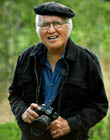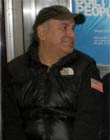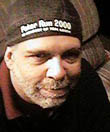|
|
This topic comprises 4 pages: 1 2 3 4
|
|
Author
|
Topic: 'The Jazz Singer' (1927) - DVD availability
|
|
|
|
|
|
|
|
|
Will Kutler
Phenomenal Film Handler

Posts: 1506
From: Tucson, AZ, USA
Registered: Feb 2001
|
 posted 08-05-2004 08:32 PM
posted 08-05-2004 08:32 PM




Leo
The Jazz Singer occasioally plays on some of the classic movie stations...like Turner. The prints (on tv) did seem to be very clean!
As for the Kol Nidre recording itself, it is available. I forgot the distributor, but some years ago there was an excellent
Kol Nidre compiliation that was released. This compiliation was Kol Nidre exclusive, and featured Rosenblatt, Sirota, Pierce, Tucker, A.J., 101 Strings, and several others! You might look for it.
It may have been a Columbia release, but I have forgotten. It was available on cassette, but I am unsure about c.d.
| IP: Logged
|
|
|
|
William Hooper
Phenomenal Film Handler
Posts: 1879
From: Mobile, AL USA
Registered: Jun 99
|
 posted 08-06-2004 02:10 AM
posted 08-06-2004 02:10 AM





quote: Leo Enticknap
Hmm... certainly the film as a whole celebrates Jewish ideology, and the 'Kol Nidre' synagogue scene just before the final number explicitly celebrates the Jewish religion as well; but there are a lot of other films which celebrate similar ideologies and beliefs and which I could have chosen off the shelf of my local Virgin (video shop, that is!) this afternoon. If that is the reason, it's a pity.
That's not the reason. The Warners were Jewish, & I think the author of the play was Jewish. The problem is that it's offensive because of Jolson's blackface minstrel show character.


Minstrel shows were an entertainment form originated in the USA, & were the antecedents of other indigenous US entertainment forms such as vaudeville, burlesque, & the musical comedy. All those other forms which developed from & included aspects of minstrel shows are pretty familiar now, but minstrel shows have been disappeared from the memory of popular culture because its central premise is too nasty to bring in the house.
Minstrel shows evolved from 'blackface acts'; singles which appeared in pre-US civil war theatres nationwide. The first was Emmitt Till; his success spawned many others who adopted the form (such as the most famous, Thomas Rice, a.k.a "Jim Crow", his blackface character's name).
The blackface act was simple: a single with comedy & song, the comedy was a portrayal of a stereotype poor, uneducated southern black person played for laughs. The performer was a white man made up in blackface. As the form became standardized to set the framework for the humor, the conventions of heightening & universalizing caricatured aspects of the south - watermelon, the plantation, etc. were locked in as setup for gags.
From the single, entire companies were formed of blackface performers essentially employing the same premise, but expanding it to accommodate an entire show, not just one spot on the bill. More caricature aspects were locked in, & also some changes for spectacle, not the least was dressing the entire company in formal wear for big numbers. They became mind-bogglingly elaborate (I wish I could find some pictures I've seen, imagine the most expensive stage set for Showboat you've ever seen, then put 45 men in white tie, tails, tophat & black face in formal assembly on there).
Some of the developed standards of the *schematic* portions of the minstrel shows were the actors' parade (a carryover from antebellum theatre travelling troupes, but for minstrel shows coming to town, the actors were all in costume & following the wagons in caricature performace to the theatre), the 'cakewalk' (a dance number), & most influentially, the verbal comedy segment with Tambo, Mr. Bones, & Mr. Interlocutor.
It grew from the assembled musicians onstage for a number, seated in a line or semicircle across the stage. At the conclusion of the number, there would be comic interchange between 'Mr. Interlocutor' seated at the center (usually not in blackface, i.e. a white man), & oscillating back & forth for comic lines between two performers at the extreme ends of the line, at one end Tambo (who played a tambourine), at the other end Mr. Bones (who basically played the spoons or sticks).
It was a laboratory of straight man/comic from which burlesque & vaudeville (& all subsequent types utilizing the machinery) came. Mr. Interlocutor was the straight man, sometimes for variety one of the end men would set up a straight line for the other end man. You could pare down from the comics (the 'end men') to one, but the oscillation back & forth heightened the suspense which is the most critical part of setup/suspense/payoff. The structure was adapted & incorporated into burlesque comedy, 'doubles', comic scenes with honed straight/comic design &/or roles, & even as minstrel shows toured outside the US became structual components of English music hall Pat & Mike 'crosstalk acts' (more than fair, since the American musical comedy is pretty much the creation of Guy Bolton & English transplant P. G. Wodehouse working in NYC).
Minstrel shows played nationwide, were mostly written (both music & comic parts) by writers around the NYC theatrical hub. Almost all the 'traditional' romanticized songs about the south: "Dixie", etc., were written for minstrel shows by NY-based Tin Pan Alley songwriters. Touring minstrel shows died out in the 20's, as did vaudeville & touring theatricals, as movies became more attractive to run in theaters. However, minstrel shows still were performed all over; if you check eBay, you'll find tons of programs for minstrel shows mounted by high schools, churches, fraternal organizations, police & firemen's associations, local theatre groups, etc. fairly solidly & frequently through the 1960s. There were even on TV still into the 1960s occasional moments in variety programs where suddenly they'd pop up with a minstrel show segment.
The problem was of course that they presented as standard knowledge caricatured, unfair portrayals of black people. These were the only portrayals of black people being presented by the media. As overwhelmingly bizarre as the minstrel show world had become with ornate heightened plantation settings, white people in blackface speaking a dialect that had become its own more than one from any particular place, those images of black people were the ones that whites recieved & accepted as norms.
The political pressure came mostly from the NAACP which protested & boycotted against them, as they had the play The Klansman & later Griffith's adaptation of it Birth of A Nation.
"Minstrel Show" in the US is a derogative term now applied to something which presents unrealistic & damaging carictured portrayals of some group for political or monetary gain. Al Sharpton's been accused of running one, there was a huge cry about a proposed reality show to be constructed as a real-life Beverly Hillbillies by putting rural & isolated southern whites in some urban, upscale social environment as a minstrel show, I remember that MTV got slammed because of the video 'Cotton Eyed Joe' by the group Rednex who presented L'il Abner southern sterotypes as a minstrel show, Queer As Folk & Queer Eye for the Straight Guy have been called gay minstrel shows, etc. Spike Lee examined how constructed entertainment, no matter how demeaning, can be more fascinating & rewarding to an audience than real issues in the minstrel-show based "Bamboozled".
Al Jolson's "Plantation Act", a Vitaphone short which predates "The Jazz Singer", has had its sound discs discovered recently & the whole brought together again. It's a minstrel show tailored to support only a star performer (Jolson), as opposed to the earlier 'blackface acts' which preceded minstrel shows. For a better idea of the minstrel show parallel universe, you've got to see the Jolson movie "WonderBar", in which the number "Goin' to Heaven On A Mule" will make you wonder if you're losing you're mind.
It's interesting that the two most significant turning point movies, Birth of A Nation & The Jazz Singer, had something at the core which was done at the expense of black people in the US. That's why they're hot potatoes, as well as Disney's "Song of the South", which very plainly has Uncle Remus living in the minstrel show parallel universe of a sunny, lazy, bucolic, 100% trouble-free, Zip-A-Dee-Do-Dah 'South'.
http://chnm.gmu.edu/courses/magic/news/lgthatcher.html
http://images.search.yahoo.com/search/images?p=minstrel+shows&ei=UTF-8&n=20&fl=1&vl=lang_en&all=0&fr=FP-tab-web-t
http://www.musicals101.com/minstrel.htm
http://www.jsfmusic.com/Uncle_Tom/Tom_Article6.html
| IP: Logged
|
|
Will Kutler
Phenomenal Film Handler

Posts: 1506
From: Tucson, AZ, USA
Registered: Feb 2001
|
 posted 08-06-2004 03:56 AM
posted 08-06-2004 03:56 AM




William,
A little history of Kol Nidre:
The origions Kol Nidre (All Vows) are not really known. The Kol Nidre is in Aramaic...not Hebrew, Aramaic being the root of both Hebrew and Arabic.
Kol Nidre is not a prayer, and to a large extent has been a source of grief for the Jewish People. It has been retained in lituragy largly due to the haunting melody, which really sets the tone for the High-Holidays (Rosh HaShanah-New Year and Yom Kippur-The Day of Atonement)
Kol Nidre is really a legal document of sorts. It asks for promises and vows made during the year to be forgiven....anti-semites have routinely used the Kol Nidre example as "truth/fact" that Jews cannot be trusted.
However, Rabbinic Law clearly states that the Kol Nidre is between an individual and offenses committed directly to GOD. The Kol Nidre does not include the eradication of offenses committed towards another person. Rather, the offender must seek forgiveness from the party that was offended, to right the wrong...if possible, regardless of what that entails. In seeking forgiveness from GOD, we do what we can to better our lives through action, and to live honestly, etc....
| IP: Logged
|
|
|
|
|
|
William Hooper
Phenomenal Film Handler
Posts: 1879
From: Mobile, AL USA
Registered: Jun 99
|
 posted 08-06-2004 06:54 AM
posted 08-06-2004 06:54 AM





Will, that's interesting about Kol Nidre. Not the least because The Lord's Prayer, one of the centerpieces of protestant denominations, contains a line about 'forgive us our debts, as we forgive our debtors'. I don't think any protestant businessman would have viewed this as a loophole for business, & viewing Kol Nidre in that light would surely be strangely oblivious, if not hypoctitical! Probably it's a feature siezed on by xenophobic people that never had to deal with Jewish businessmen much - you can't do business that way!
Leo: A lot of BOAN's availability has to do with its PD status. 'Jazz Singer' is still under copyright by Warner's or maybe MGM or whoever bought that part of the library the last time the carousel went around. BOAN can be put out by smaller companies, even Brownlow's in the US is distributed by the niche label Image which has lots of esoteric fringe stuff including Cannibal Holocaust, some Von Stroheim, & all sorts of things. I think Warner's or MGM as mainstream companies clearly see it as a risk for causing widespread offense & attracting big unwelcome negative PR.
'Song of the South' may be stereotype-ridden & unrealistic, but the stories it drew on are still very solid fables: probably Warners looks at The Jazz Singer & sees the tar baby.
| IP: Logged
|
|
|
|
|
|
|
|
|
|
|
|
All times are Central (GMT -6:00)
|
This topic comprises 4 pages: 1 2 3 4
|
Powered by Infopop Corporation
UBB.classicTM
6.3.1.2
The Film-Tech Forums are designed for various members related to the cinema industry to express their opinions, viewpoints and testimonials on various products, services and events based upon speculation, personal knowledge and factual information through use, therefore all views represented here allow no liability upon the publishers of this web site and the owners of said views assume no liability for any ill will resulting from these postings. The posts made here are for educational as well as entertainment purposes and as such anyone viewing this portion of the website must accept these views as statements of the author of that opinion
and agrees to release the authors from any and all liability.
|

 Home
Home
 Products
Products
 Store
Store
 Forum
Forum
 Warehouse
Warehouse
 Contact Us
Contact Us




 Printer-friendly view of this topic
Printer-friendly view of this topic







![[Roll Eyes]](rolleyes.gif)












